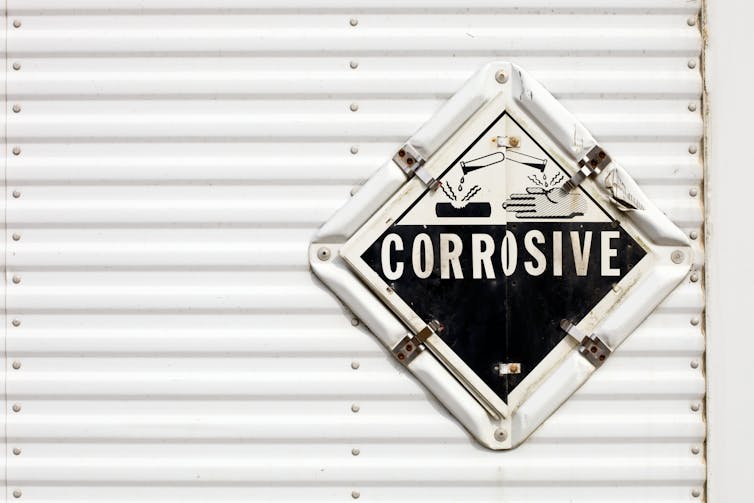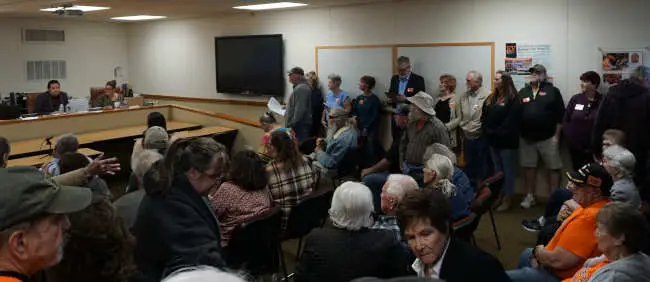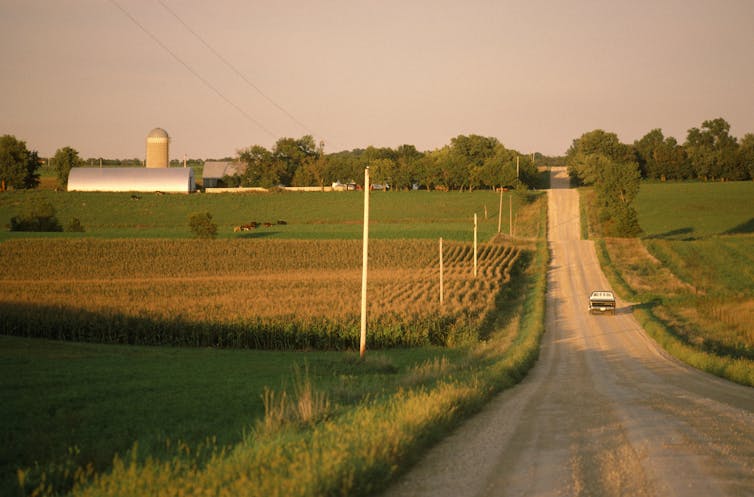
Ever wonder what those colorful signs with symbols and numbers on the backs of trucks mean? They’re just one visible part of a web of regulations that aim to keep workers and the environment safe while shipping hazardous waste.
Transporting hazardous materials such as dangerous gases, poisons, harmful chemicals, corrosives and radioactive material across the country is risky. But because approximately 3 billion pounds of hazardous material needs to go from place to place in the U.S. each year, it’s unavoidable.
With all the material that needs to cross the country, hazardous material spills from both truck and rail transportation are relatively unavoidable. But good regulations can keep these incidents to a minimum.
As an operations and logistics expert, I’ve studied hazardous materials transportation for years. Government agencies from the municipal to federal levels have rules governing the handling and transportation of these materials, though they can be a little complicated.
A hazardous material is anything that can cause a health or safety risk to people or the environment. Regulators put hazardous materials into nine categories and rate them based on the level of danger they pose during transport and handling.
These ratings help anyone associated with the shipment take precautions and figure out the right packaging and transportation methods for each type of hazardous material.
Who regulates hazardous material?
A number of agencies across the country closely scrutinize the entire hazardous materials supply chain from start to finish. The Occupational Safety and Health Administration regulates the proper handling of hazardous materials where they’re either manufactured or used. OSHA puts limits on how much hazardous material one person can be exposed to and for how long.
If the material spills, or if there’s any left over when they’re done being used, the U.S. Environmental Protection Agency, handles its disposal. Both EPA and OSHA regulations come into play during spills.
In between, the U.S. Department of Transportation regulates all of the movement of hazardous materials through four of its administrations.
The Pipeline and Hazardous Materials Safety Administration regulates the transportation of hazardous materials by truck, rail, pipeline and ship. The Federal Railroad Administration plays a role in regulating rail shipments, just as the Federal Highway Administration oversees movement over the road. In the air, the Federal Aviation Administration regulates hazardous materials.
Key regulations
Two essential regulations govern the handling and transportation of hazardous materials. In 1975, the EPA published the Hazardous Material Transportation Act, which protects people and property from hazardous material transportation risks.
This act gave the secretary of transportation more regulatory and enforcement authority than before. It gave the secretary power to designate materials as hazardous, add packaging requirements and come up with operating rules.
The Pipeline and Hazardous Materials Safety Administration oversees hazardous materials regulations that apply to everything from packaging and labeling to loading and unloading procedures. They also include training requirements for workers who have to handle hazardous materials and plans to make sure these materials stay secure.
Along with the Federal Highway Administration, the Pipeline and Hazardous Materials Safety Administration and the Federal Motor Carrier Safety Administration regulate hazardous material movement by road.

Trucking companies transporting hazardous materials need to use specific vehicles and qualified drivers to comply with Federal Motor Carrier Safety Administration regulations. Drivers transporting hazardous materials must have specialized training and a hazardous materials endorsement on their commercial driver’s license.
The Pipeline and Hazardous Materials Safety Administration’s and the Federal Railroad Administration’s regulations for rail shipments require that rail cars fit physical and structural specifications. These specifications include having thick tanks and pressure release devices. Rail cars also have to undergo inspections and maintenance, per these rules.
The crew in charge of a hazardous materials train needs specialized training. And rail carriers need to have emergency response plans in case of a hazardous material spill.
Both truck and rail companies must follow regulations that require the proper classification, packaging and labeling of hazardous materials. The symbols on these labels let handlers and emergency responders know the potential risks the materials pose.
The Pipeline and Hazardous Materials Safety Administration’s security regulations prevent theft or sabotage of hazardous materials. They make sure that only authorized people can access the shipments. These regulations may require background checks for workers, secure storage facilities, and systems that track and monitor hazardous material.
Hazardous material shipments and incidents both have increased in the past 10 years. Anyone involved in the supply chain needs to understand hazardous material regulations.
Sticking to these rules helps get these materials from place to place safely. It also keeps safe those who handle them and minimizes the risk of accidents, injuries and environmental harm.![]()
Michael F. Gorman, Professor of Business Analytics and Operations Management, University of Dayton
This article is republished from The Conversation under a Creative Commons license. Read the original article.

 How to resolve AdBlock issue?
How to resolve AdBlock issue? 










